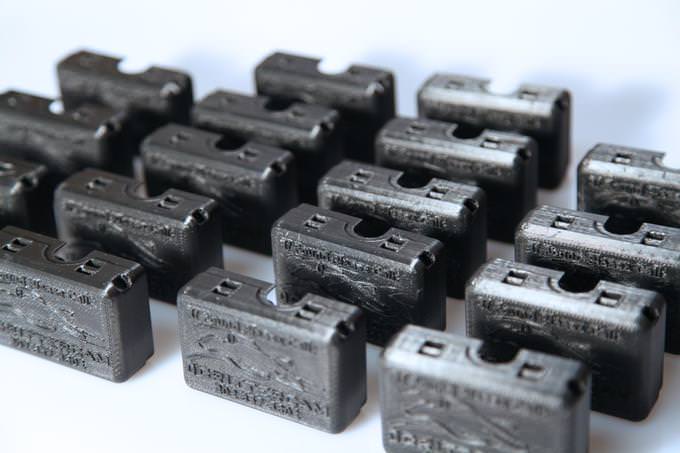
#IT & Technology - Telecom
'Kitty Cam' Combines Spy Cameras, 3D Printed Enclosures
National Geographic Crittercam is a project dedicated to documenting unique species via video recording
In a 2013 study in conjunction with the University of Georgia, Crittercam took to the suburban streets of a city in Georgia, traveling on the collars of roaming domesticated cats.
The resultant study and quantitative assessment of the predatory lives of domesticated roaming cats was published in the journal Biological Conservation. Based on the hunting practices of domesticated cats, and the surprising results that suggest not all cats are hunters, the study led to a follow-up project focusing on the lives of feral roaming cats.
Feral roaming cats are expected to have a greater impact on indigenous species as predators. For 2014, Crittercam has invented miniaturized cameras held by 3D printed housings which will eliminate interference – such as abuse from the feral cats themselves, environmental dangers and weather – to better record and evaluate the effect these non-indigenous cats have on indigenous species in their respective ecosystems.
“It’s a very contentious issue,” Kyler J. Abernathy, Director of Research for National Geographic Remote Imaging, explains. “There are a lot of people who really, really love cats so talking about cats as ‘bad guys’ or predators can have a strong negative effect; talking about regulating or managing cats is a very emotional subject for many people.”
In truth, the hunting styles and frequency of feral cats as well as their basic survival necessities are unknown. It’s new territory. “I’m comfortable saying they are affecting their environment as hunters, but how significant that impact is and what parts of the ecosystem are affected are unknown,” says Abernathy. “We need solid numbers to understand how to maintain a decent balance in these populations.”Abernathy led the Crittercam team through engineering and designing the software, tracking, video recording and housing for both the domesticated roaming cat cameras and subsequent feral cat cameras.
Crittercam devised camera housings for feral cats using 3D printing, although the original Crittercam cat cameras relied on a simpler plastic casing: “It’s slightly embarrassing but we put the original electronics in a tampon case,” says Abernathy. “It was cheap and sort of worked; but domestic cats dunked them in water.”
Domestic cats proved to have an affinity for dragging the cameras through water as well as a love affair with the suburban sewers of Georgia (an affair wrought with diseases proven to make their way back into the home). “With these feral cats, we know the cases will be exposed to more extreme weather conditions and a fair amount of abuse; we decided it was time to make a very perfect-use case for this project,” says Abernathy. There’s something to be said for serendipitously stumbling upon tampon cases at a convenience store and seeing their potential as a cat camera, though.
The second iteration Crittercam “Kitty Cams” took store-bought “spy cameras” and tore apart the inner workings, added a more powerful battery pack and special programming, and mounted the guts into the 3D printed casing. The feral cat camera was created using 3D printing Fused Deposition Modeling (FDM) from Solid Concepts Inc.
“Making this little housing using 3D Printing was pretty key; 3D printing was the only way we could get something as intricate of a shape and still very thin and lightweight,” says Abernathy. The new Crittercam system focuses on better imaging, motion sensors, visual data, and eventual connection through a GPS integrated system. Nineteen 3D printed camera housings are out in the field currently. Other immediate animals that may soon benefit from the 3D printed cases include bobcats, badgers and wolverines.
“I like cats. I like animals in general. Yes, a predator needs to eat, but we’ve introduced these animals to new habitats and their populations aren’t being managed well,” says Abernathy. “If cats are having a significant impact I think it’s on us to fix that situation. But we can’t take action without the right information; it could have unfortunate effects, not with malicious intent but for acting on misinformation.”
The focus remains on cats as predators, and the level of impact that predation has on their ecosystem. The study will chronicle how active feral cats are as hunters, what time of day feral cats hunt and which native animals feral cats are impinging upon. “Our original study experienced a good deal of extrapolation from outside groups based on our research, resulting in ‘squishy’ numbers,” says Abernathy. Crittercam will set the record straight; without solid numbers – and with people strongly motivated on either side of the issue – there can’t be a truly purposeful discussion about cats and their larger role within their respective habitats.
As for domestic roaming cats, a follow-up report outlines health findings from the original study, and cautions cat owners: Free-roaming cats experience “hazardous encounters” while outside, including “vehicular accidents, aggression from other animals and exposure to infectious disease” (Loyd et al, 2013, p. 1). Cat owners may be negligibly aware that their pets are risk junkies, apt to bring in an amalgam of health problems into the home. Without becoming too ideological here for either bird or cat teams, considering regulating pets to indoors or supervision while outdoors might be good not just for small critter populations but for the health of the beloved pet.

